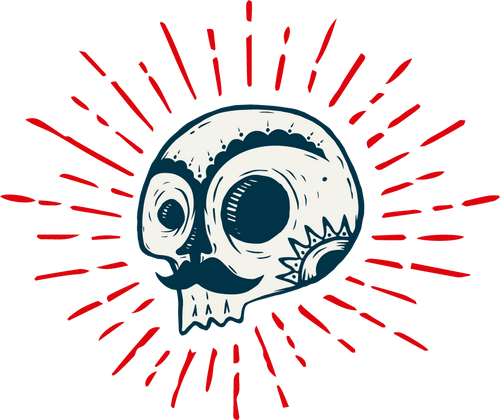El Tiempo en las Raices /Time in the roots
This EPIC little bilingual book tells amazing tales about life around Mexico in communion with what we like to call #agavelife
This one is a very special one and we have only few copys for Germany and Europe.
2018 // 130 pages // bilingual edition.
result of // residency of DANI EIZIRIK with the REZPIRAL project in Oaxaca/MX, grown from encounters with five mezcalero families, written and drawn with five collaborators.
drawings and designs // DANI EIZIRIK
with the drawings of // ALEX WHITE MAZZARELLA & CHANA DE MOURA
texts // ALEX WHITE MAZZARELLA, CARMELA VASQUEZ RUIZ, CATARINA ILLSLEY GRANICH, DANI EIZIRIK, VINIK JURÉ
revision and translation // LOREAN PAULO LINCHEN
cover in Amate (ámatl), mesoamerican amerindian vegetal paper, manufactured in Puebla/MX.
typographic cover printing LINOTIPOGRÁFICA QUINTAS, Oaxaca/MX. inside two color offset
this book was made possible in part by underwriting from SACRED: Saving Agave for Culture, Recreation, Education, and Development. + sacredagave.org
drawings and design CC, Daniel Eizirik, 2018 creative-commons
Riacho (Brasil): www.riacho.me
DANI
“Agaves are sensual in their diversity. They hypnotize the eye in a unique way with their colors and forms, their elevated geometries, by challenging the impossible in their symmetries. Aside from their visual magic, the Agavaceae family seduces people with their resistance. They grow majestically in hot, dry and rocky places, and survive drastic climate changes in the annual cycles. Some of these plants seem to teach us how to live our lives with passion, how to overcome adversity and stay strong and radiant. They have such magnetism that, at some point, I began to feel that people have the illusion they’re managing the plant, but it’s actually the plant that’s managing people. They have so many different uses for us, humans, that we became only another disperser of their seeds.”
ALEX
“This narrative presents encounters with mezcalero families who still produce it in artisanal ways according to ancestral methods. If you know much about the agave, I hope you enjoy these trails. If you’ve perhaps tasted the mezcal of a maestro or family but haven’t experienced who, where and what this spirit comes from, may these pages open a door for you.”
CARMEN
“My interest in music and dance grew when I was seven. My grandfather used to drink a lot of mezcal, so I had already tasted it. There was always a scent of mezcal around the house. Two years ago, I found a mezcal-drinking cup over 20 years old, that belonged to my grandfather. These tiny glass cups already existed. That was very special. As a child I had no idea that I would devote myself to mezcal the way I do now. Finding a mezcal cup meant a lot to me, it was a good recollection of my grandfather. We belong to the Sierra Sur. It has a very cold weather, and people used to drink mezcal to warm themselves up. Truth be said: it works!”
LEO
“To be independent is to start from the bottom, with seeds. It is oneself who creates his own luxury of which agaves he will have available, and what variety of mezcals he or she will obtain. Because to be independent is to know with which mezcal one is working. Butif one is exclusively with a Brand, the brand will say, you know what, distill me this or distill me that, or I want this variety, or I want that variety. Instead to be independent is to know what you have, what type of agave one works, what one has planted, what one will have tomorrow, and the day after tomorrow.”
CATARINA
“The agave is a plant that produces flowers only once in its lifetime. After many years of growth and maturation, one day it begins to lose weight in the center of the rose and launches its large, impressive flowering stalk from which sprouts first the flowers and then the fruits that contain the seeds. After this, the plant dies. One can say that it is a plant that dies giving birth.”
“To make mezcal, mature agaves should be used, whether castrated ones or those entering a reproductive state. The capones are castrated magueys. Castration is an operation that must be taken on agaves that initiate their flowering process, and impedes the formation of seeds. The flowering of the maguey is the penultimate step in the life of the agave and the formation of the seed is the last step before death. Its life program brings it to create a stalk or flowering stem that permits its reproduction in order to perpetuate the specie. This step in its life requires all of the energy it is capable of gathering and mustering.”
YES, YOU NEED THIS BOOK.
This product is unavailable












